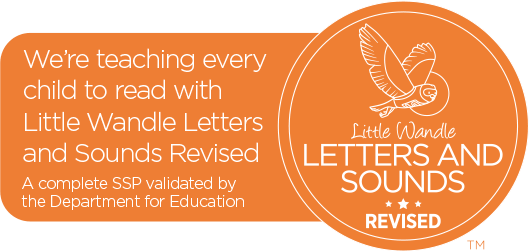Phonics
Phonics

At St Felix we follow Little Wandle Letters and Sounds.
Little Wandle Letters and Sounds Revised is a complete systematic synthetic phonics programme (SSP) developed for schools by schools. Based on the original Letters and Sounds, but extensively revised to provide a complete teaching programme meeting all the expectations of the National Curriculum, the Ofsted Deep Dive into reading and preparing your children to go beyond the expectations of the Phonics Screening Check.
Seven features of effective phonics practice
These have been identified as characterising phonics teaching in highly successful schools:
• direct teaching in frequent, short bursts
• consistency of approach
• secure, systematic progression in phonics learning
• maintaining pace of learning
• providing repeated practice
• application of phonics using matched decodable books
• early identification of children at risk of falling behind, linked to the provision of effective keep-up support.
How to Pronounce the Phonemes your child is learning
https://www.littlewandlelettersandsounds.org.uk/resources/for-parents/
These three videos show you how to pronounce the sounds. Notice how the children don’t add an ‘uh’ sound at the end, so they say: ‘t’ not ‘tuh’. Use the guides to help your child remember how to write their letters and say their sounds.
Pronunciation Guide Reception Autumn 1
Pronunciation Guide Reception Autumn 2
Grapheme Guide Reception Spring 1
Phonics Screening Check
At the end of Year 1 pupils take the phonics screening check find more information here.
Early Reading alongside Phonics
Supporting your child with reading
Although your child will be taught to read at school, you can have a huge impact on their reading journey by continuing their practice at home.
There are two types of reading book that your child may bring home:
A reading practice book. This will be at the correct phonic stage for your child. They should be able to read this fluently and independently.
A sharing book. Your child will not be able to read this on their own. This book is for you both to read and enjoy together.
Reading practice book
This book has been carefully matched to your child’s current reading level. If your child is reading it with little help, please don’t worry that it’s too easy – your child needs to develop fluency and confidence in reading.
Listen to them read the book. Remember to give them lots of praise – celebrate their success! If they can’t read a word, read it to them. After they have finished, talk about the book together.
Sharing book
In order to encourage your child to become a lifelong reader, it is important that they learn to read for pleasure. The sharing book is a book they have chosen for you to enjoy together.
Please remember that you shouldn’t expect your child to read this alone. Read it to or with them. Discuss the pictures, enjoy the story, predict what might happen next, use different voices for the characters, explore the facts in a non-fiction book. The main thing is that you have fun!
